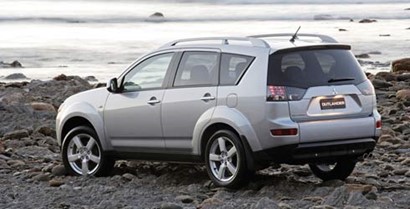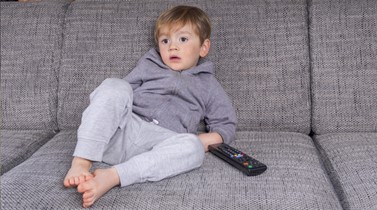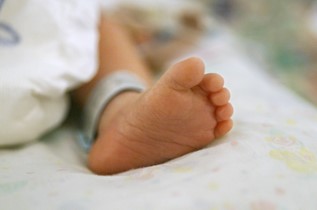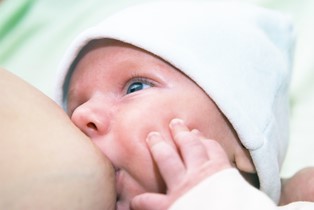What you need to know about c-sections

Caesarean sections - are they are reasonable choice, or the cruellest cut? Specialist obstetrician/gynaecologist Dr Anil Sharma weighs in on the debate.
.jpg) A Caesarean section is a surgical procedure that is undertaken to deliver a baby via an incision in the abdominal wall. It is either planned (elective) or undertaken as an emergency. The emergency ones may be "real" emergencies, meaning that they are performed when harm may occur to the baby or mother if they are not done quickly. They may also be carried out in a "semi-planned" manner, such as when the baby and mother are both well, but the chances of vaginal birth are looking low or remote as the labour is not going well.
A Caesarean section is a surgical procedure that is undertaken to deliver a baby via an incision in the abdominal wall. It is either planned (elective) or undertaken as an emergency. The emergency ones may be "real" emergencies, meaning that they are performed when harm may occur to the baby or mother if they are not done quickly. They may also be carried out in a "semi-planned" manner, such as when the baby and mother are both well, but the chances of vaginal birth are looking low or remote as the labour is not going well.
Around one of every four New Zealand births is via C-section, and the rates in Auckland maternity units vary between 20-40%.
Reasons for having a C-section
There are scenarios in which a C-section is the only possible or safe mode of delivery of the baby, such as:
• Failure to "progress" in labour (to "progress" means to keep dilating and moving forwards to make vaginal birth possible).
• Delayed descent of the baby's head once full dilation of the cervix has occurred.
• Failed induction of labour.
• Placenta praevia (where the placenta or afterbirth is in the lower part of the uterus or covering the opening in the cervix).
Another very important reason for a C-section is foetal distress, due to any cause. Of course, it takes an experienced obstetrician to diagnose foetal distress more accurately than most, as tests to diagnose it are not exactly highly reliable. The problem is that the only tests that exist need to be acted upon if they are abnormal until better tests are invented.
Other foetal reasons for a C-section include:
• Unusual presentations such as breech, when the baby presents to the pelvis by its buttocks or feet and not by its head.
• Many multiple pregnancies (twins, triplets, etc).
• An overly large baby (macrosomia).
• Sometimes there may be evidence or a logical "hunch" on the doctor's part that the "fit" between the baby's head and the mother's pelvis may be poor (cephalo-pelvic disproportion), and a C-section may be suggested.
Also, a maternal condition such as severe high blood pressure or poor foetal growth (growth-restricted baby) may well mean that a C-section is safer than an attempted vaginal birth.
One or more previous C-sections with a reasonable likelihood of a repeat being needed even if labour is attempted may lead to another repeat C-section being offered.
Similarly, a woman with a previous C-section may not wish to try labour this time around. A previous classical C-section, where the uterine incision is on the upper part of the womb (more common in some overseas countries), or, indeed, where there has been previous surgery through the wall of the uterus, can also lead to a C-section.
All of the above can increase the chances of rupture of the scar during labour and this, in turn, can cause severely negative outcomes to both the baby and mother.
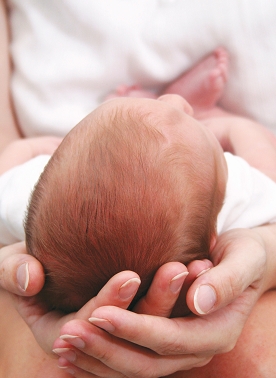 A history of having had a vaginal repair will mostly lead to a C-section being offered, as the repair will become undone and damaged with a vaginal birth. These repairs are usually performed after initial pelvic-floor damage due to vaginal childbirth. Active genital infection with herpes at the time of birth will lead to a C-section, to prevent the baby from developing the infection also.
A history of having had a vaginal repair will mostly lead to a C-section being offered, as the repair will become undone and damaged with a vaginal birth. These repairs are usually performed after initial pelvic-floor damage due to vaginal childbirth. Active genital infection with herpes at the time of birth will lead to a C-section, to prevent the baby from developing the infection also.
Maternal choice is another reason cited for the rising rate of C-sections. This is due to informed choice after careful consideration, fear of vaginal birth, concerns about the safety of the baby, or, indeed, due to a previous bad experience with postnatal post-traumatic stress disorder due to a very difficult labour.
Complications of C-sections versus vaginal births
There are several possible complications of C-sections that mothers considering or facing this surgery should be aware of. These include increased risks of blood loss, which is, on average, double that of vaginal birth.
There also increased risks of thromboembolism (blood clots in the legs that can break off and go to the lungs and cause serious problems), wound infection, and injuries to internal organs and structures.
There may also be increased difficulty with bonding with the baby, not least due to being exhausted and having to recover from a major operation.
Sometimes (depending on the reasons for the operation), women who have had a C-section feel an emotional and psychological sense of failure. This needs to be closely monitored by a health professional.
What to expect when you have a C-section
After an assessment by an obstetrician, an anaesthetic assessment is also undertaken and consent forms are signed after discussion and appropriate blood tests taken. Obviously, the speed of these and other preparations is matched to the need for urgency.
Theatre can be daunting, as it is well staffed, and often there will be around 8-10 people there. The faces will include one or two anaesthetic team members and one or two obstetric team members. There will also be an anaesthetic assistant, surgical assistant and around two other theatre nurses, a paediatric nurse or doctor (for the baby) and an orderly.
Usually no more than one support person (such as the woman's partner) is permitted to be in theatre for logistical reasons, and, although photography is usually encouraged, it is not a good idea to photograph or video-record staff without their consent, so it's sensible to ask about parameters.
Almost all C-sections are undertaken with regional anaesthesia, which means spinal or epidural injections near the nerves that emerge from the spinal cord. This bathes them in local anaesthetic and removes the ability they have to carry pain and temperature sensations to the rest of the body. Touch and pressure sensations remain, but the legs generally feel heavy and are difficult to move.
The anaesthetist usually uses ice to test the nerve block, as the pain nerves and temperature nerves are the ones that need to be blocked. After a urine catheter has been inserted to empty the bladder to prevent the chances of it being injured, the skin is painted with antiseptic solution and sterile drapes are applied.
A C-section can take anywhere from around 20 minutes to an hour, depending on the circumstances, the speed of the surgeon, and complications. The baby is delivered, then the cord is cut and clamped, and the placenta is removed. The baby is usually checked by a paediatrician or midwife next.
Usually a dose of antibiotic is given intravenously to the mum in order to prevent the risk of infection of the wound and urine. An intravenous drug that mimics the effect of natural oxytocin to make the uterus contract and help limit blood loss is also given. Following delivery of the placenta, the layers of the abdomen are closed. Many women prefer to avoid staples to close the skin layer and it is worthwhile discussing this with your surgeon.
Afterwards, you will be transferred to the recovery area in theatre prior to being sent back to the ward with your baby for around a four-night stay. Early mobilisation and eating are generally encouraged to help you get fit for new or repeat motherhood!
So which mode of delivery?
All things considered, some women (the minority) will wish to have a C-section rather than a vaginal birth. Overall, looking at the big collective picture, and excluding women who need a C-section for medical indications, women are more likely to have safer outcomes with a vaginal birth.
Furthermore, postnatal recovery (getting on with mental and physical wellbeing and parenthood) is overall faster after a vaginal birth than a C-section. Carers disagree as to the actual amount of time that a C-section "sets you back" compared to a natural birth, varying from one week to four weeks.
Nevertheless, there are women who would prefer to have a C-section for non-medical indications. In my opinion, these women (and their partners) should have a detailed, informed discussion with an obstetrician on at least two occasions. Informed discussion is not the same as being told what to do. If they still elect to have a C-section despite all this, my view is that this is okay, although many would disagree. Obviously, other pre-existing medical conditions need to be borne in mind also.
Unfortunately, our society does seem to readily stigmatise issues, and one of these is women who want a C-section. My advice is to initially discuss your wishes with your lead maternity carer, and, if you get fobbed off rather than be offered detailed discussion, ask for someone else's opinion. I also feel that coercion to have a C-section (if it is safe to try or continue to try for a vaginal birth) is also clearly unacceptable.
Bear in mind that in the bigger picture, New Zealand's limited health resources are not adequate for "C-sections for all". One Auckland district health board has sought a legal opinion, which supports the refusal of non-medically indicated C-sections.
The arguments will continue to rage about the "correct" C-section section rate and the "right to choose". My views on this are based on safety and maternal choice after informed consent. It should be noted that most women (but not all) who have had both a vaginal birth and a C-section prefer the former.
The other problem is that, in order of safety, vaginal birth is first, then elective C-section, and, finally, emergency C-section. So while a vaginal birth is overall the safest choice, an attempted vaginal birth with a low chance of success is not a great idea.
This means that in the absence of a crystal ball, the advice of caregivers whom women can trust is paramount. If you feel the need for further discussion, you may be entitled to visit a public obstetrician and can seek advice from a private one (if they offer secondary care).
Dr Anil Sharma is a specialist doctor in Gynaecology and Maternity. He is very involved in lectures and updates for family doctors and frequently takes part in debate regarding women's health and maternity for print media and radio. He believes that anxiety and fear can be conquered by knowledge. Anil emigrated to New Zealand from the UK in 2001 with his wife, Rachel, and he tries hard to be a hands-on and fun father (putting golf and cars on hold for the time being) to their three daughters, who were all born here. For further information about Anil's practice, visit www.dranilsharma.co.nz

AS FEATURED IN ISSUE 2 OF OHbaby! MAGAZINE. CHECK OUT OTHER ARTICLES IN THIS ISSUE BELOW







